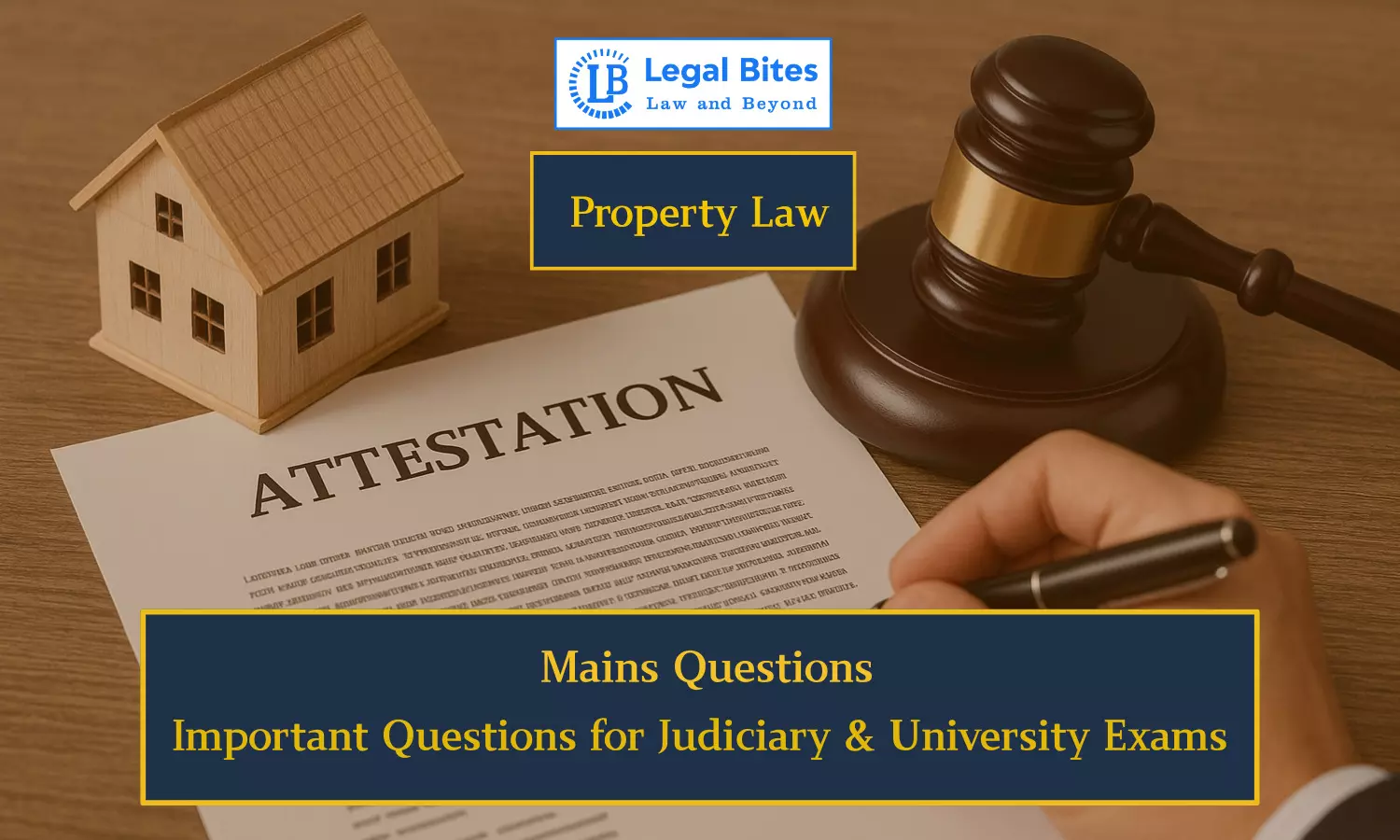Find the answer to the mains question of Property Law only on Legal Bites.

Question: Define Attestation.Find the answer to the mains question of Property Law only on Legal Bites. [Define Attestation.]AnswerAccording to Section 3 of the Transfer of Property Act, Attestation means that a person has signed the document by way of testimony of the fact that he saw it executed.The attestation process involves the certification or verification of a legal document's authenticity, often through the presence of witnesses. There are two distinct scenarios in which...
Question: Define Attestation.
Find the answer to the mains question of Property Law only on Legal Bites. [Define Attestation.]
Answer
According to Section 3 of the Transfer of Property Act, Attestation means that a person has signed the document by way of testimony of the fact that he saw it executed.
The attestation process involves the certification or verification of a legal document's authenticity, often through the presence of witnesses. There are two distinct scenarios in which attestation can occur:
A. Physical Presence of Witnesses:
In this scenario, the attestation process requires the physical presence of at least two witnesses during the execution of the document. These witnesses are expected to observe the individual (executant) sign the document of transfer. Their role is crucial in confirming the genuineness of the signature and, by extension, the validity of the document. The presence of these witnesses serves as a safeguard against potential fraud or coercion, as their first-hand observation establishes a link between the document and the genuine intention of the executant.
B. Acknowledgment in Absence of Witnesses:
The second part of the attestation process addresses situations where witnesses were not physically present at the time of document execution. Despite their absence, the attestation can still be considered valid if the executant personally acknowledges their signature to the witnesses afterwards. This means that the executant, having signed the document in private, later affirms the authenticity of their signature directly to the witnesses. This personal acknowledgement serves as an alternative method to establish the genuineness of the document when the physical presence of witnesses during execution is not feasible.
It is to be noted that attestation does not import anything more, and therefore it must be distinguished from cases where a person signs a document merely as a witness to the execution but also to give consent to the transaction. A person who is a party to the deed cannot under any circumstances be allowed to sign the instrument as an attesting witness.
Essentials of a Valid Attestation :
1. The attesting witnesses must always be two or more for it to be an authentic attestation.
2. The attestator though need not see the execution of the legal instrument, he must either see the executant sign or affix his mark or see anyone else do so on the direction of the executant or receive personal acknowledgement from the executant of the same.
3. But, it is mandatory for the attestator to sign or affix his mark in the presence of the executor for it to validate as an ‘attesting witness’.
4. The attestator can only sign after the execution of the legal instrument/document is complete for it to be a valid attestation.
5. The attestators (two or more) need not sign or affix their mark at the same time.
6. There is no particular form of attestation that the parties need to adhere to. Even a signature by an attesting witness on the legal document with all forms and formalities may constitute attestation.

Mayank Shekhar
Mayank is an alumnus of the prestigious Faculty of Law, Delhi University. Under his leadership, Legal Bites has been researching and developing resources through blogging, educational resources, competitions, and seminars.
